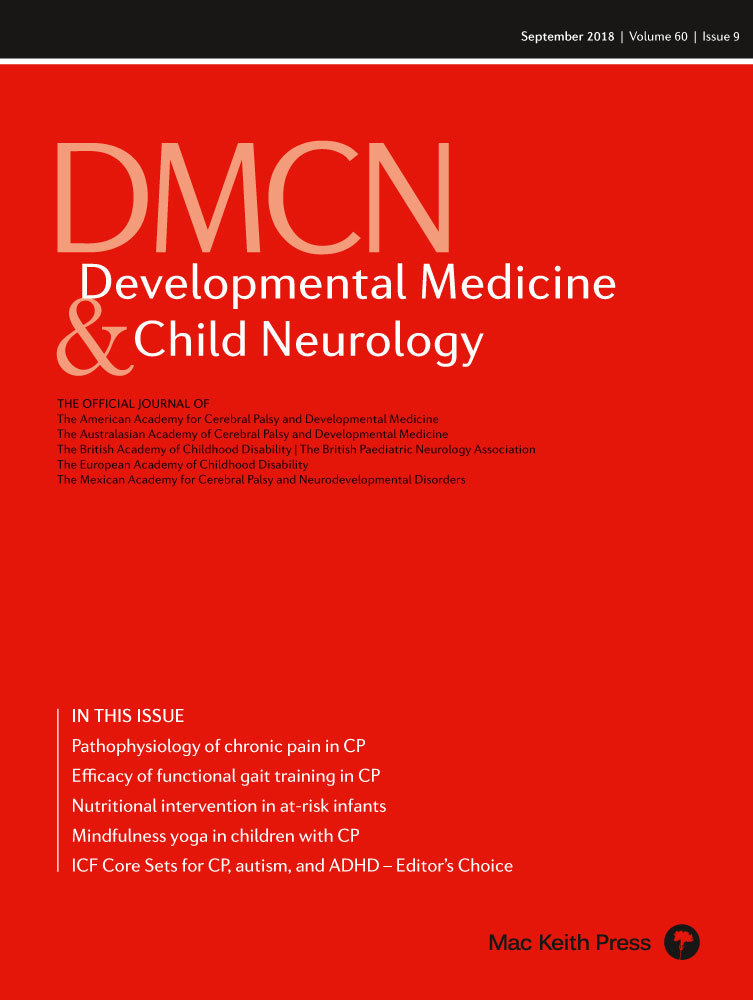Nutritional status in children with cerebral palsy: figuring out feeding
Abstract
This commentary is on the original article by Polack et al. on pages 914–921 of this issue.
About 58 million children in low- and middle-income countries will not reach their developmental potential (http://whqlibdoc.who.int/publications/2011/9789240685215_eng.pdf).1 In Africa, 56 million children (of an estimated 158 million) under 5 years of age are stunted, 28 million are underweight, and 6 million are severely wasted.2 Malnutrition and neuro-disability are major, overlapping health problems. Health services have concentrated on the prevention and treatment of acute, infectious illnesses for decades. It was the volume of patients, need for rapid action, and cost-effectiveness of interventions that drove health care delivery. This has led to measurable success. In 2015, the Millennium Development Goals reported a global reduction of 53% in mortality of children under 5 years of age: from 90/1000 to 43/1000 (www.un.org/millenniumgoals/childhealth.shtml). As acute problems are better controlled, chronic diseases such as neuro-disability and malnutrition are exposed. It is estimated that one-third of all deaths in children under 5 years of age are associated with poor nutrition (http://www.fao.org/sustainable-development-goals/mdg/goal-4/en/). This fact is not new but the management of malnutrition has remained somewhat divorced from other paediatric services.
Health care in low- and middle-income countries is slowly enlarging to include non-communicable diseases and outcomes; to include not only mortality but also morbidity. For children with neuro-disabilities it is the quality of life that really matters; its impact on families, the economy, and health services is commonly underestimated. Vertical funding for diseases (e.g. tuberculosis or malaria) has not supported the multi-disciplinary needs of these children. Though neuro-disability and malnutrition are interlinked, referral to either discipline may be random. Yet the child and his family need the expertise of both (and more) disciplines.
Family – and especially the mother – are central to a child's well-being. Feeding is core to nurturing of the young. A well-fed, contented infant usually means a contented mother. Thus, emotional well-being and neurodevelopment are mutually beneficial (https://www.kidsmatter.edu.au/sites/default/files/public/KidsMatter-Early-Childhood-neurodevelopment-web.pdf). Mothers can become frustrated with a ‘difficult feeder’ and with themselves for failing in what seems to be a simple task.
There are many reasons why a child with cerebral palsy (CP) has feeding problems and Polack et al.3 report the effect of these feeding difficulties and nutritional status on quality of life (QoL) for 76 rural (Ghanaian) guardians, of whom most are mothers. Overall, the carers’ QoL was assessed as poor (median summary score was 12.5/100 on the 36-item Pediatric Quality of Life Inventory Family Impact Questionnaire Module). Children with higher levels of CP (Gross Motor Function Classification System levels III and IV) had the most feeding difficulties. Though all the mothers worried about the poor intake and feeding problems of their children, those caring for children with the greatest difficulties reported the poorest QoL.
Nutritional status is not easy to assess in children with CP; the inability to stand and joint contractures meant knee height (i.e. femur length) was used as a proxy measurement to calculate weight or age for height. Middle upper arm circumference, a more practical test, did not align well with other nutritional measurements. The authors wondered if middle upper arm circumference in children with CP is inaccurate because of greater use of arms for mobility. I am unconvinced; perhaps the small sample size and wide age range (18mo–18y) affected the measurements.
The study numbers were small and do not allow for detailed sub-analysis but the messages are clear. Simple assessments for malnutrition and neuro-disability must be carried out by health workers in both disciplines.4 Better still they should work together.
Difficulty in feeding is stressful for both child and mother – both of whom can benefit from the mother learning to use simple, helpful techniques. After all, when figuring out feeding, it is she who is really in charge.




